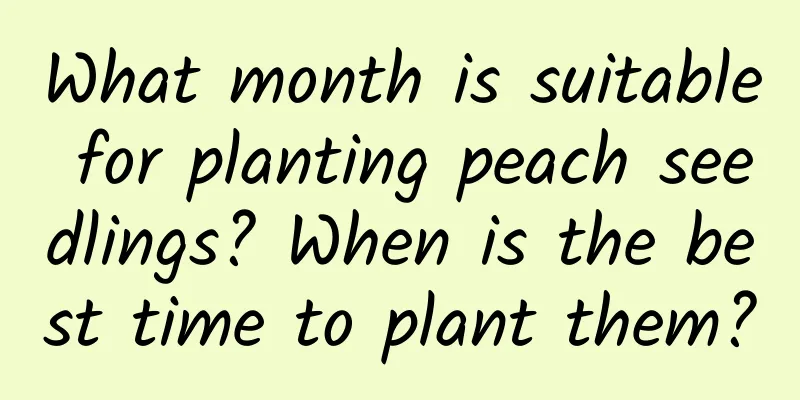A complete guide to grapevine diseases

|
Grapes are a very popular fruit . The southern region is warm and humid, and improper management will seriously affect the economic benefits of grapes. Therefore, we must pay attention to disease prevention and control. Below is a complete illustration of grape vine diseases. 1. Botrytis cinerea Symptoms: The damage occurs before flowering, the inflorescence is dark brown, as if scalded by boiling water, the diseased tissue is soft and rotten, and the surface is covered with gray mold. The fruit changes color and rots, and when it is damp, a layer of mouse-gray mold grows, and sometimes black lumpy sclerotia appear. Prevention and control methods : drain water in time, ventilate and reduce humidity. The pesticides of choice are boscalid; carcymidone; cyproconazole; pyraclostrobin; or pyraclostrobin + boscalid spray. 2. Downy Mildew Symptoms: In the early stage, small water-soaked, translucent spots with unclear edges appear on the leaf surface. The disease starts from the fruit stalks, with gray-green circular lesions and a white mold layer on the surface, which then shrinks and falls off. Prevention and control methods: Optional agents include propineb; mancozeb ; picoxystrobin; mancozeb + metalaxyl; myclobutanil; dimethomorph; or pyraclostrobin + methocarb. 3. Powdery mildew Symptoms: The most critical period for prevention and control is before and after budding, and the peak period of disease is from before and after flowering to large and small fruit stages. White spots covered with a layer of white powdery substance appear on the leaves. In severe cases, the white powdery substance covers the entire leaf, and the diseased leaves curl, wither and fall off. Prevention and control methods: The pesticides you can choose include thiophanate-methyl; hexaconazole; or spray with fluopicolide + pyraclostrobin. 4. White rot Symptoms: Light brown, water-soaked spots with unclear edges appear on the spike axis and fruit stalks. The fruit initially becomes light brown, water-soaked and rotten, which then spreads to the entire fruit. Small grayish-white spots appear in the fruit. Prevention and control methods: Cut off diseased shoots, clean up pathogenic bacteria residues, and reduce the source of disease. The pesticides that can be selected include azoxystrobin; pyraclostrobin + methocarb; mancozeb; thiram; tebuconazole; or tebuconazole + oxathiapiprolin spray. 5. Brown spot disease Symptoms: The disease only affects leaves, usually starting from the lower leaves and gradually spreading upwards. In severe cases, the diseased leaves dry up, crack and fall early. The edges of the lesions are light brown and moist, with black circular rings in the middle. Later, gray or dark brown mold grows on the lesions. Prevention and control methods: Remove diseased fruits, vines and leaves during the growing season to minimize unnecessary wounds. Mancozeb and fenpropimorph can be applied. Spray once every 10 to 15 days, and spray 2 to 3 times continuously. 6. Anthrax Symptoms: The disease is more likely to occur in early summer and after the grapes have colored. It mainly harms the fruit and causes it to rot. Most of the infections on branches, leaves, etc. are latent and have no obvious symptoms. Prevention and control methods: Remove diseased fruits, vines and leaves during the growing season to minimize unnecessary wounds. The pesticides available for control include fenpropimorph, myclobutanil, or polyoxin B for spraying. 7. Black pox Symptoms: It occurs severely in rainy and humid places. In the early stage, round or irregular reddish-brown spots appear on the leaf surface. The middle part is sunken, grayish-white, and the edges are dark purple. In the later stage, the leaves often dry up and crack. Prevention and control methods: The pesticides you can choose are thiophanate-methyl; mancozeb; or tebuconazole + oxathiocarb. 8. Rust Symptoms: Mainly exist on the lower and middle leaves of the plant. In the early stage, sporadic small yellow spots appear, and the surrounding area is water-soaked. Later, orange-yellow summer spores form on the back of the leaves and gradually expand. Prevention and control methods: Control the application of nitrogen fertilizer, and appropriately increase the application of phosphorus and potassium fertilizers to enhance tree growth. The pharmaceutical agent may be triadimefon; triadimefon sulfur suspension; or crystalline lime sulfur mixture. That’s it |
<<: Should we water asparagus fern thoroughly? How to water it thoroughly?
Recommend
Where does dragon fruit grow and where is it produced?
1. Where does it grow? Dragon fruit grows on the ...
Does Daphne koreana prefer shade or sun? How to maintain?
Daphne koreana is a very fragrant ornamental flow...
How often should I water the spider plant? How often should I water it?
How often should you water spider plants? The wat...
Planting technology of Pinus fasciata
Vanilla has a wide adaptability and is cold-resis...
Are mangosteen seeds poisonous?
1. Is it toxic? Mangosteen seeds are not poisonou...
Kiwifruit planting and management methods in August
In August, we will usher in the two solar terms o...
What is the reasonable method of applying base fertilizer to seedlings?
The role of seedling base fertilizer Fertilizing ...
What are the benefits of eating coriander and how to cook coriander
1. What are the benefits of eating coriander? Imp...
How to grow rice bamboo to make it grow vigorously?
Rice bamboo, also known as small bamboo, has been...
How to make the ball orchid bloom and what to do after it blooms
1. How to bloom 1. Appropriate light: Hoya is a s...
When is the best time to plant outdoor strawberry seedlings?
Open-air strawberry seedling planting time If you...
Causes and treatments of yellow leaves of calendula
1. Improper fertilization 1. Reason: If no fertil...
How often can rosemary be harvested?
Rosemary is an evergreen shrub native to the Medi...
How to water Black Beauty
Black Beauty Watering Tips Black Beauty is relati...
Common varieties of black rice
Candela microphylla This variety of black rice is...









